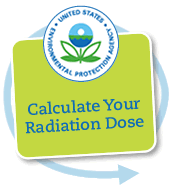LANL Effects on Rio Grande Water Quality
Radionuclides
- Raw and untreated Rio Grande water at the site of the BDD Project currently meets water standards for radionuclides such as those of California
and Colorado that are 100 times more stringent than current federal drinking water standards. - Numerous scientific risk evaluation studies by a variety of state and federal agencies over the last seven years conclude the Rio Grande
water and sediment at the BDD diversion site are free of LANL radiological contaminants, except during periods of high storm water runoff from Los
Alamos Canyon. PCBs have never been measured at concentrations exceeding drinking water standards. - Concentrations of LANL legacy contaminants in the Rio Grande are almost always below safe drinking water regulated levels. The exception
can be traced to storm events with high run-off of contaminated sediment. - Most radionuclides and PCBs are tightly absorbed to sediments. The BDD Project Water Treatment Plant includes the most effective processes
available for removing sediments. - Early notification systems will ensure inflow from the river to the treatment facility will be stopped during high storm events or high concentration of sediments in the river.
- BDD Board and Staff understand that the community is concerned about the possibility of having LANL contaminants in its drinking water. The
scientific data regarding these contaminants are complex. BDD Board and Staff are taking steps to ensure that the community’s drinking water will be safe.
The BDD Project Water Treatment Plant, which provides multiple barriers to these contaminants, has been designed using the most up-to-date and effective process for removing these contaminants and meeting all drinking water standards, including more stringent standards for plutonium and other radionuclides. The BDD Water Treatment Plant contains advance drinking water treatment processes beyond those that are commonly used elsewhere across the nation. The BDD Project will produce excellent and safe drinking water.
Other Potential Contaminants
What about EDCs and PPCPs in the Rio Grande?
The scientific community has recently begun to study the issue of EDCs and PPCPs in drinking water sources. EDCs are Endocrine-Disrupting Chemicals that interfere with the function of the body’s natural hormones and that, at critical life stages, may have long-lasting effects on normal growth, development, reproduction and behavior. Environmental contaminants, including some pesticides, industrial chemicals and disinfection byproducts (which can form when disinfectants such as chlorine react with naturally present compounds in water), are either known or suspected EDCs.
PPCPs are Pharmaceutical and Personal Care Products. This refers to thousands of personal health and cosmetic products and can include prescriptions, over-the-counter medicines, fragrances and cosmetics.
The BDD Project Water Treatment Plant includes both conventional and advanced treatment processes for treating surface water diverted from the Rio Grande, which are beyond those commonly used across the nation. These processes include, but are not limited to:
- Oxidation through ozonation
- Absorption through Granular Activated Carbon (GAC) contactors
- Biological degradation through ozonation with Granular Activated Carbon (GAC) contactors
These are some of the best available technologies for removing an array of pharmaceuticals and personal care products as well as EDCs that may generally
be found in the Rio Grande; however, studies of the Rio Grande suggest the risk of these contaminants is very low. The BDD Project will produce excellent and safe drinking water. For more information, please visit the Water Quality section.
Sample Collection
In 2002, the NMED collected samples at various locations along the Rio Grande for analysis of a number of different pharmaceuticals at 15 effluent sites and 23 surface water sites. (NMED, 2002). Very low level of caffeine, estrogenic hormones and one anti-depressant were detected in 4 of the 23 surface water sites, although the study also reported that none of these drugs were detected in any public drinking water samples. The study concluded that there was no evidence of widespread drug residues occurring throughout New Mexico’s ambient waters.
A second study in 2004 by a UNM graduate student (Brown, 2004) evaluated the presence of other PPCPs in the Rio Grande and other sources near Albuquerque. Analyses for 29 non-antibiotic medicines and 10 antibiotics were completed. Only one of the antibiotics was detected in the Rio Grande below Albuquerque’s wastewater treatment plant. The study concluded the findings were not alarming, since no estrogenic hormones were found and only trace concentrations of one antibiotic was detected in the river below the plant.
How/When/Who Formulates Standards
The EPA sets national drinking water standards under the Safe Drinking Water Act and regulates compliance with those standards.
In New Mexico, drinking water quality is administered and enforced by the NMED Drinking Water Bureau.
Current standards involve testing drinking water quality for more than 95 contaminants, including:
- 9 microbials
- 8 disinfection by-products and residuals
- 18 inorganics
- 53 organics
- 7 radiochemical contaminants (radionuclides)
The frequency with which water quality is sampled varies by type of test. All testing and analysis must be performed at certified laboratories.
Annually, the Sangre de Cristo Water Division of the City of Santa Fe publishes an annual water quality report for its customers to notify them of the testing results.
The Safe Drinking Water Act directs the EPA to periodically update the Safe Drinking Water Act by identifying and listing contaminants that may be present in drinking water and require regulation.
EPA listings are prioritized for research and data collection. The City of Santa Fe participates and contributes to these data collection efforts.


